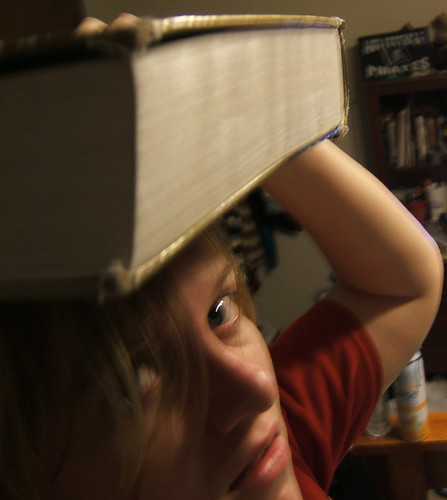 |
|
|
I had a great day, yesterday, in Byron, Minnesota — though this morning got interesting when I suddenly realized that my flight out was at 7:40 instead of 11:40 (They rhyme). I discovered the mistake at 6:40, but made the flight, thanks to a very friendly cab driver with a very heavy foot. He earned his tip.
I never use my Knitter back channel tool with an audience, that I do not learn something new. Yesterday, Knitter plucker, Carl Anderson, alerted us to a project that was proposed in May by Clay Burell, “Teaching ‘Against the Textbook.'” I love it. He makes reference to one of my all-time favorite books, “Lies my Teacher Told Me,” a 1995 work by James Leowen, where he examines 12 popular American History Text books and concludes that the “..textbook authors propagated factually false, eurocentric, and mythologized views of history.” ((“Lies My Teacher Told Me.” Wikipedia, The Free Encyclopedia. 4 Aug 2009, 14:18 UTC. 4 Aug 2009 <http://en.wikipedia.org/w/index.php?title=Lies_My_Teacher_Told_Me&oldid=306016626>. ))
Clay’s plan is to:
..create a single wiki, “A Critical Supplement to Major History Textbooks,” and create a page on it for each textbook we’re using, in whatever class.
He continues:
In our classrooms, we assign student teams to tackle each section of the textbook by identifying any perceived biases, coverage emphases and de-emphases, omissions, errors of fact, and so forth, in that section, and publish their findings on that textbook’s page on the wiki.
It occurs to me how audacious this idea would have been when I was teaching history — questioning your textbook. It would have felt like pulling the rug out from under yourself, while your still standing on it. Shift happens!

Hi, David! I read your blog regularly and love it.
This is an awesome idea. I think that the best teaching occurs when we, as educators, overcome our egos and allow the students to challenge and discuss that which we present to them. The result is, more often than not, an empowered group of kids who actually reach those levels of critical thinking and problem solving that regurgitation of a textbook will never produce. Kudos to Clay and his efforts to create students who seek truth and understanding.
I remember finding errors in my high school texts, and the sheer joy I had revealing them to teachers who were aghast that I had found them and generally wished I had not.
Can you tell us more about how this looks in the classroom, on your syllabus, on tests, in discussion? I’m moving back into U.S. History after a few years out. Heaven knows there is a lot of bias — our studentbody is more than 70% Hispanic, and the biases glare out almost every day. I must be doing something wrong, though. Most of my students don’t get worked up over the cultural biases, and many assume it’s not a bias to be overcome, but is instead just more evidence of the way the deck of life is stacked against them.
This idea sounds great. How does it work?
Right on! School started here Monday. Someone said to me “The first 3 days of school are wasted Learning starts Day 1 in a math class books or no books, and why not! Textbooks are not the holy grail.
Please visit my learning blog at http://www.tinyurl.com/realsmart